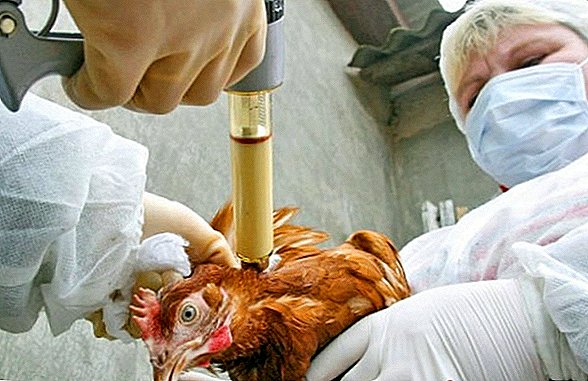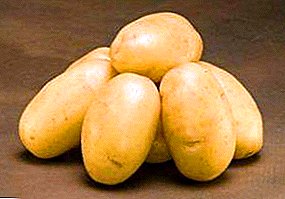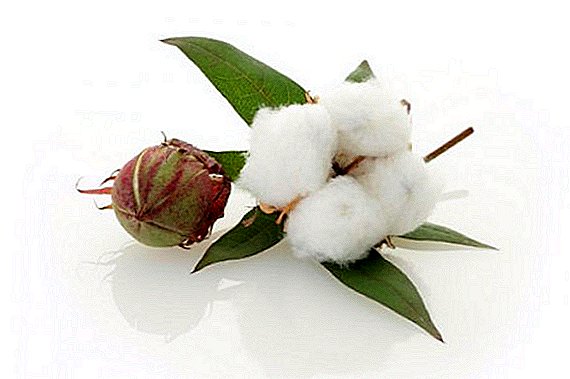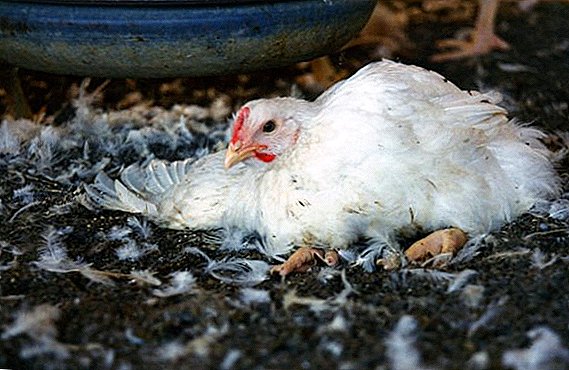 Raw eggs carry a hidden threat: salmonellosis. Situations related to this disease are controlled by the sanitary epidemiological stations, veterinary, medical and customs services. Consider what danger this disease carries to people and animals, why it appears, how it looks and, most importantly, how to deal with this scourge.
Raw eggs carry a hidden threat: salmonellosis. Situations related to this disease are controlled by the sanitary epidemiological stations, veterinary, medical and customs services. Consider what danger this disease carries to people and animals, why it appears, how it looks and, most importantly, how to deal with this scourge.
Salmonellosis
Increased attention to this infectious disease is not accidental: it affects poultry, it is easily transmitted to other agricultural animals. Attacked by salmonella, the farm suffers huge losses. In addition, the bacterium can be transmitted to humans by causing a health and life-threatening illness - salmonellosis.
Learn about other diseases of chickens - Marek's disease, aspergillosis, mycoplasmosis, coccidiosis, infectious bronchitis, egg production syndrome, conjunctivitis, salpingitis.
What is salmonellosis
It is not in vain that the health services of the whole world control the situation with salmonellosis, because this attack, which is dangerous for people and animals, causes damage to health and property, while eliminating it is quite difficult. Its pathogen, the Salmonella bacterium, has about 2300 forms, of which 700 are capable of infecting humans and 230 are poultry.
Three of its pathogens bear the greatest damage to domestic poultry farming:
- typhimurium;
- enteritis;
- gallinarum pullorum.

Did you know? Salmonella was first discovered during an outbreak of swine plague in 1885 by the veterinarians Daniel Salmon and Theobald Smith. In addition to the fact that scientists identified this enterobacteria, they also found out that the dead pathogen gives animals a good protection against the disease, which made it possible to resist the epidemic through vaccination.An anaerobic bacterium in the form of a stick has a flagellum and is able to move.
It is very stable and has the ability to persist for quite a long time:
- in bird droppings - 4 months;
- in the water from the aqueduct - 2 months;
- in a natural reservoir - 7 months;
- in salted and smoked meat - 3 months;
- in soil and manure - 12 months;
- in room dust - 18 months.

Important! Meat, milk and other products can not only serve as sticks carriers, they multiply with pleasure there, and the product itself does not change the appearance, taste or smell. She smoked and salted, and freezing prolonged the life of the dangerous bacteria by 4-5 months. In the warm season, the risk of all intestinal infections, including salmonellosis, increases many times over.
Salmonella has low resistance to:
- chemicals;
- antiseptics;
- long (up to 15 minutes) boiling.
What is dangerous for humans?
People suffer salmonella severely, often for a long time. After the wand has penetrated into the body, depending on its condition, the symptoms of the disease appear after 6-72 hours. They may be bright and characteristic, and may not appear. In the latter case, although the patient does not suffer, nevertheless he is a carrier and can infect other people.

Did you know? The plastic cutting board is twice as large as the wooden one, the probability of becoming a peddler of salmonella.Penetrating into the gastrointestinal tract, the wand settles on the walls of the small intestine and actively secretes toxins that contribute to dehydration, the loss of tonus by vessels, and damage to the nervous system. Sometimes the first symptoms are the clinical manifestations characteristic of catarrh of the upper respiratory tract, later liquid stool and vomiting are added.
Manifestations of the disease can be:
- high temperature;
- headache and general weakness;
- nausea with or without vomiting;
- plentiful stool with great loss of fluid leading to dehydration;
- abdominal pain;
- an increase in the size of the spleen and liver, the development of liver failure.

Do not underestimate this formidable adversary: he ranks first among foodborne infections leading to death. He bears the greatest danger to children: the younger they are, the harder and longer they get sick, especially if parents are pulling with treatment for medical help, hoping to cope on their own. Pediatric babies may experience purulent foci:
- in the pleura;
- in the bones;
- in the membranes of the brain;
- in other internal organs.
Important! The insidious disease is that poultry infected with a bacterium often may not show any symptoms at all, infecting eggs, meat, milk and other products with a cane. In this case, the mass poisoning of people becomes unexpected, and it turns out that, in addition to their treatment, urgent measures are required in relation to the animals and their habitats.
Ways to spread
Being intestinal or enterobacteria, salmonella enters the body, mainly through food and water. Infection can occur from wild birds or animals, such as rats, from livestock or wild animals: most mammals are sensitive to salmonella and can be a source of infection.

If you use the services of unverified sellers, you can purchase contaminated feed. The disease can also be brought by man. However, healthy chickens, the content of which meets all standards, may not become infected even when in contact with the causative agent of the disease.
The big trouble is the infection of the incubator, which occurs by means of infected eggs laid by the diseased hen. If the young are kept in a confined space, the infection can spread through the air.
Did you know? Bacteria play an important role in our life: in an adult, there will be a variety of permanent bacteria in the body weighing about 2 kg.
The reasons
Getting into food and / or water, Salmonella causes an outbreak of the disease among chickens. However, this may not happen if the body is healthy and able to resist.

Adverse factors that can cause infection in the livestock are:
- overheating or overcooling;
- littered grazing area and / or poultry housing;
- weakened immunity in chickens after a recent illness;
- weak immunity due to genetic causes;
- too heap of livestock in the room;
- stagnant water that a bird encounters during walking.
Important! In large bird farms, an outbreak can be protracted and last for a year or more. Only properly taken measures in combination with the technological change of livestock and the renewal of economic areas will help to overcome the disease faster.
Symptoms
Salmonellosis is a very insidious disease, it has a long, not less than a week, incubation period, and when its first symptoms appear, most of the population is infected.
Moreover, the course of this disease can occur at all without any symptoms in the bird, which cannot be said about the infected people. In this case, Salmonella can be reliably detected only by a laboratory method based on a blood test, litter and eggs. The dead individual is subjected to more thorough study.

Juveniles have the greatest susceptibility: 2-week-old chicks immediately become ill with subacute or acute forms, often accompanied by lung lesions, including due to their exposure to airborne infections.
Find out why there are growths on the legs of chickens, why chickens go bald and what to treat, why chickens diarrhea.
Poultry farmers should alert the following symptoms in chickens:
- the nestling breathes with difficulty, with wheezing, his beak is ajar, mucus is released from the nose;
- he is physically weak, behaves sluggishly;
- the chicken has lost his appetite, his weight is decreasing;
- growth also slows;
- feathers grow weakly, or even bald spots appear;
- the bird feels constant pain, squealing anxiously for this reason;
- wings sag;
- paralysis occurs.

Did you know? Under ideally favorable conditions, one intestinal bacterium is able to produce offspring enough to fold it into a pyramid of a kilometer height with a two-kilometer base. Having imagined these scales, we can conclude about the effectiveness of the protective mechanisms hindering this process.Adults show symptoms much later, about a week after infection:
- swollen joints in the legs and shoulder;
- the bird has obvious problems with vision, as well as coordination of movements;
- on the feather cover appear bald spots;
- comb and catkins pale, scallop falls off;
- severe thirst and loss of fluid due to diarrhea, which may be with blood in acute form;
- chickens stop gaining weight, egg production decreases;
- breathing may be wheezing, goiter loses tone;
- movement and lifting to the legs cause difficulties; paralysis of the limbs may later develop;
- hearing may suffer, in this case the chicken takes on a characteristic posture: having strongly arched the neck, lies with its head on the ground.

Important! Never take in the hands of pigeons and other birds, even if it seems to you that they need veterinary care. If the birds are infected with salmonellosis, which is more than likely, you will no longer help her, and you will get problems in the form of a long and debilitating contagious disease. Do not feed from the hands of pigeons and other urban and wild birds, do not allow children to do this, tell them about the potential danger.Salmonella leaks:
- in extremely sharp form - Newborn chickens are generally susceptible, which, as a rule, die quickly;
- in acute form - among the grown-up chicks of about 10 days of age: they become lethargic, their wings sag, they peep a lot, do not eat, is characterized by severe diarrhea, paralysis may occur;
- in subacute and chronic forms - more often in adult chickens, the symptoms are much weaker: the bird loses activity and appetite, secondary infections join, the temperature rises, the gastrointestinal tract is disturbed.

So, with intestinal formChronically or subacutely, bloody diarrhea that pollutes feathers on the tail is characteristic.
With articular form defeat of the joints is not initially accompanied by any pathologies, but later they swell and swell. The bird moves with difficulty, limbs tremble, the picture is similar to the symptoms of paralysis. In advanced cases, the muscles of the limbs atrophy.
It is considered the rarest nervous form salmonellosis, it is characterized by paralysis. If a nervous form is suspected, the diseased bird is isolated or killed, because the treatment is often ineffective, and the disease is painful and can last more than one week.
Did you know? In order to get rid of the danger, an infected salmonella 400 g piece of meat should be cooked for three and a half hours.
Pullorosis
Pullorosis, although it is a type of salmonellosis, is worthy of separate consideration. Pathology is caused by the bacterium Salmonella pullorum and has differences. Introduced into the incubator, pullorosis affects the young in a matter of days (up to 5 days) and causes a high mortality rate without proper treatment.

There is reason to suspect pullorosis when:
- clogged with feces and inflamed cloaca;
- the chicken becomes drowsy, stays in one place for a long time with its eyes closed;
- gastric peritonitis is found in layers;
- litter becomes white or brownish-green in color, becomes liquid, has a loose texture;
- blue scallop and mucous membranes;
- the bird breathes with difficulty;
- convulsive activity develops.
Did you know? Scientists are working to create special "smart" stickers for food, which would change color depending on exceeding the allowable concentration threshold in the product of unwanted organisms, including Salmonella and other pathogens of intestinal infections.

Check out the recommendations for the treatment of foot diseases, eye diseases in chickens.
Treatment methods
You need to start a fight with salmonellosis as soon as you know about it:
- Seeing any individual characteristic symptoms, you need to immediately isolate it from the rest of the population and quarantine for at least 10 days, during which it should be monitored. Further action should be decisive, delay can be dangerous and costly. The whole bird should be treated prophylactically, and an isolated individual can only be returned to the flock after it has been retested.
- In the fight against salmonellosis, antibiotics are prescribed, which are added to food or water, or, if appropriate, administered in the form of injections, which are selected individually for each individual, depending on age, weight, etc.
- The bird house in which salmonella is found must be kept under enhanced sanitary control so that the infection does not spread to other livestock, since it is also at risk of becoming infected with this harmful bacterium.
- Nests and eggs in them are treated with special preparations, for example, Vircon, Demzol or Metacid.
- Feeders and drinkers, as well as the entire room must be subjected to disinsection.
- Newborn chickens at the first feeding should be given probiotics.

Important! An antibiotic is not as effective in combating salmonellosis as we would like: it becomes resistant, and the disease can recur. Recovered individuals are significantly lagging behind in development.It makes sense to treat only at the initial stage, when the incubation period is still running. Individuals with severe characteristic symptoms are eliminated, conditionally healthy livestock is preventively treated by mixing the antibiotic into food and drink.
When salmonellosis is more often prescribed the following drugs:
- "Levomitsetin": affordable price and convenient packaging;
- "Baytril" ("Enrofloxacin"): significant cost, packing up to a liter;
- gentamicin sulfate 4%: favorable price and good result;
- tetracycline drugs: have a wide spectrum of action, are prescribed for fear of diagnosing salmonellosis instead of another disease.

Did you know? Despite its vitality, salmonella quickly dies in an acidic environment. It is surprising that honey, being a well-known natural preservative, has a pH level of pH 3-4.5, in which all living things, including this bacterium, cease to develop.
Preventive measures
Since salmonellosis is difficult, it is cured with difficulty, often does not show symptoms and leaves the pathogen in the ill individuals, it is important to deal with it with preventive measures.
- The most reliable measure of prevention is CCRNA (indirect hemagglutination blood-drop reaction). A diagnostic kit is purchased at a vetmagazin or clinic, with its help, diagnostics are performed regularly. If up to 10% of the livestock is infected, “suspicious” individuals are quarantined or destroyed, the equipment is disinfected, the chicken coop with chickens is treated, the birds are vaccinated. If the number of infected exceeds the 10 percent threshold, it does not make sense to carry out therapeutic measures: the livestock must be destroyed, the chicken coop and inventory - thorough disinfection.
- It can be used to prevent the disease live vaccine from Salmonella enteritidis phage type 4. It is recommended to apply it to broilers, parent flocks and industrial hens.
- The inactivated Salmocron vaccine contains two types of bacteria: typhimurium and enteritis.

- With the help of the vaccine "Avivac-Salmovac" not only salmonellosis is prevented, but also such diseases as pasteurellosis and colibacillosis are prevented.
- There is also a vaccine "SalmAbik" (production - Israel).
- As a preventive measure, specific bacteriophages are sprayed in the incubators, which, in addition to the airway, the bird receives with water within five days after hatching.
- It is necessary to carefully monitor and control the quality of feed and water, avoiding the presence of mold, stagnation, souring, etc.
- It should be timely and efficiently cleaned in the chicken coop, as well as in the nests and incubator.
- Before laying eggs in the incubator, they are disinfected.
- In addition to specific measures, a good poultry farmer regularly examines representatives of the flock, and also draws attention to the litter.
- When settling in the henhouse of new individuals, they must first be quarantined.
Find out what the hens can hurt in winter.
Комплексный профилактический подход в значительной степени снизит риск заболеваемости, а также обойдётся гораздо дешевле, чем лечение, которое бывает не всегда эффективным. Prevention repeatedly reduces the risk that salmonellosis will empty the entire chicken coop, incidentally harming the health and well-being of its owners.
Video: Tips for Diagnosing Chick Disease
Salmonellosis in chickens: reviews



Pullorosis - pathogen - Salmonella pullorum.
So, for common development.














